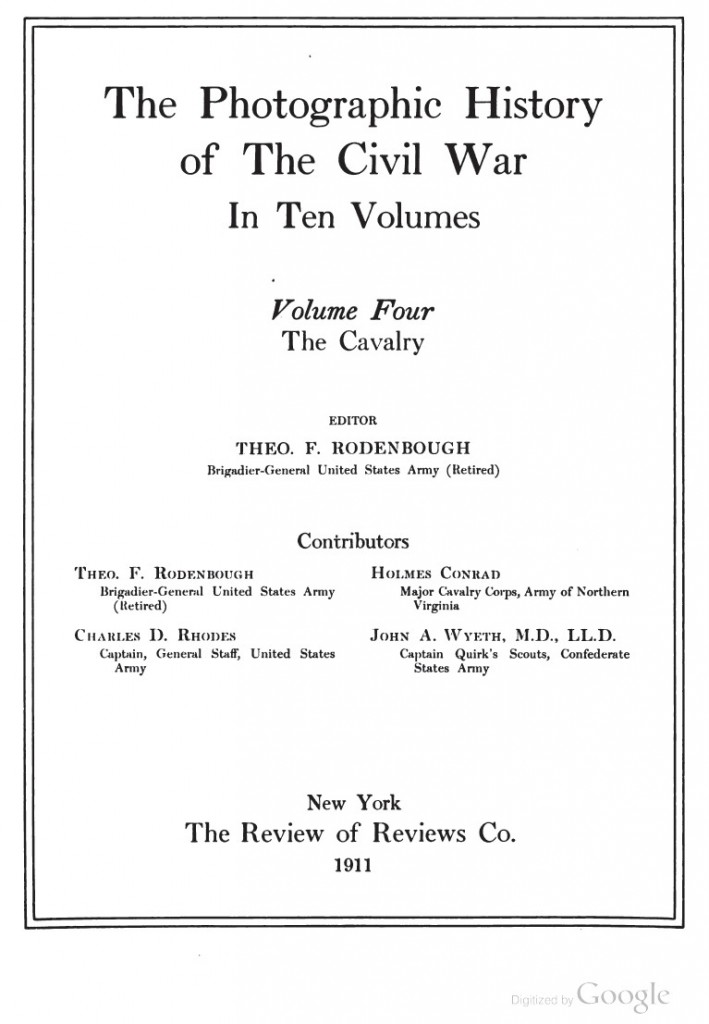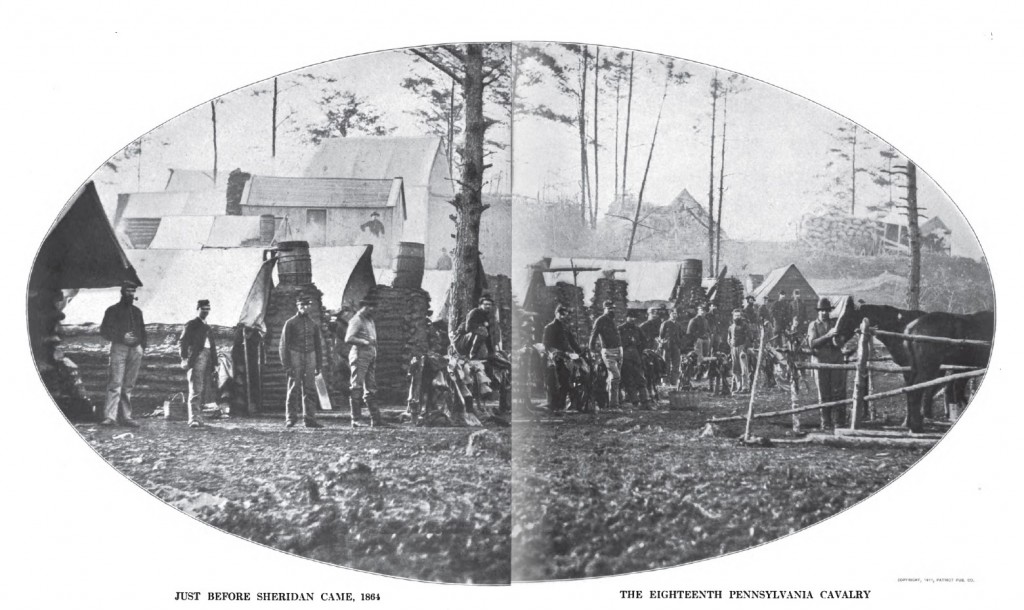The Cavalry
Posted By Norman Gasbarro on February 3, 2011
(Part 5 of 12). Contents of Volume IV of The Photographic History of the Civil War: The Cavalry.
The year 1911 was the 50th anniversary of the beginning of the Civil War. In a memorial to the war, a ten volume set of books was published entitled The Photographic History of the Civil War. This series attempted, through photographs, to do what no other books had previously done – to bring the war close and personal through previously unpublished and unavailable photographs. The series was edited by Francis Trevelyan Miller.
This post is part 5 of a 12 part series and will focus on the contents of Volume IV, The Cavalry.
Contents of Volume IV of the Photographic History of the Civil War.
“The Evolution of the American Cavalryman,” by Theodore F. Rodenbough. “The Federal Cavalry – Its Organization and Equipment,” Charles D. Rhodes. “The Confederate Cavalry in the East,” Holmes Conrad. “Federal raids and Expeditions in the East,” Charles D. Rhoads. “Federal raids and Expeditions in the West,” Charles D. Rhoads. “Morgan’s Christmas Raid, 1862-1863,” John Allan Wyeth. “Partisan Rangers of the Confederacy,” Charles D. Rhoads. “Outposts, Scouts, and Couriers,” Charles D. Rhoads. “A Ride Through the Federal Lines at Night,” John Allan Wyeth. “Cavalry Battles and charges,” Charles D. Rhoads. “Cavalry Leaders – North and South,” Theodore F. Rodenbough. “Famous Chargers,” Theodore F. Rodenbough. “Mounting the Cavalry of the Union Army,” Charles D. Rhoads.
Many men from the Lykens Valley area were connected with cavalry regiments. Previously mentioned was the 9th Pennsylvania Cavalry, which had heavy enrollment from Dauphin County, Schuylkill County and Perry County. Other cavalry regiments had significant membership as well. For example, there have been twelve persons thus far identified who were part of the 18th Pennsylvania Cavalry who should be included in the Civil War Research Project. These twelve veterans are: Jacob Beiler — William H. Bogar — Aaron C. Etsweiler — George W. P. Freeland — Thaddeus S. Freeland — Joseph H. Kawel — William F. Polm — William P. Seal — Elias “Eli” Thomas — Solomon S. Updegrove — Isaac Newton Williamson — and George F. Wingard. Information is being collected on each of those named, but more information is always sought.
A picture of the 18th Pennsylvania Cavalry appears on a two page spread in Volume IV:
The text accompanying this picture reads:
Just Before Sheridan Came, 1864 – The 18th Pennsylvania Cavalry
This photograph shows the 18th Pennsylvania Cavalry in winter-quarters near Brandy Station in March, 1864, a month before the most important event in the history of the Federal cavalry – the unifying of the cavalry branch under the aggressive Sheridan. After Kilpatrick’s raid on Richmond, ending the 2nd of March, these troopers rested in camp until Sheridan left for his Richmond raid on May 9th. A month in camp is a long time for a cavalry, and here one has a good opportunity to see with what rapidity and ease a trooper had learned to make himself comfortable. Barrels have been placed upon the chimneys in order to increase their draft. Light enclosures of poles have been thrown up for the horses, and fodder has been stacked up on the hill. With stumps and cross-pieces the McClellan saddles are kept out of the wet and mud. The saddles were covered with rawhide instead of leather, and were more uncomfortable when they split than an ill-fitting shoe. The troopers themselves look fairly contented, and some of them are not so lean and angular as in the days of scouting and hard riding. There is plenty of work ahead of them, however, nearer Richmond, which will quickly enable them to rid themselves of any superfluous flesh.
For a free download from Google Books, click here and select “PDF” in the upper right corner of the page. When the “PDF” file opens in your reader, save the file to disk. Use of the file is subject to restrictions that are spelled out on the first page of the PDF. Essentially, the restrictions specify that the digital book may be used for personal, non-profit use only and that the Google Books “watermark” should not be removed from the pages.
Tomorrow, part of this series will examine Volume V, Forts and Arillery.
 ;
;




Interesting! My grandmother’s grandfather was the George F. Wingard listed. I also see Aaron Etsweiler, who I presume would be a relative of mine, since 99% of Etzweilers use the ‘z’ and not the ‘s’ spelling. Thanks for the posts.